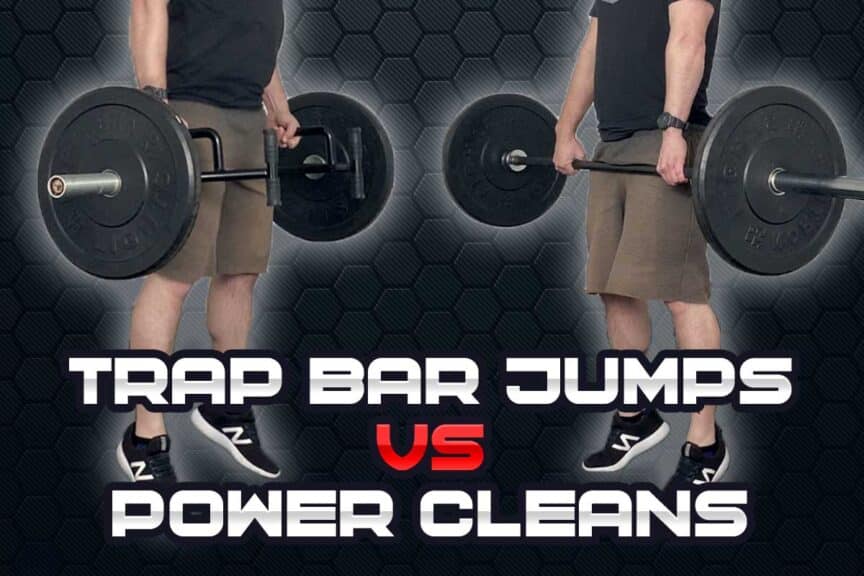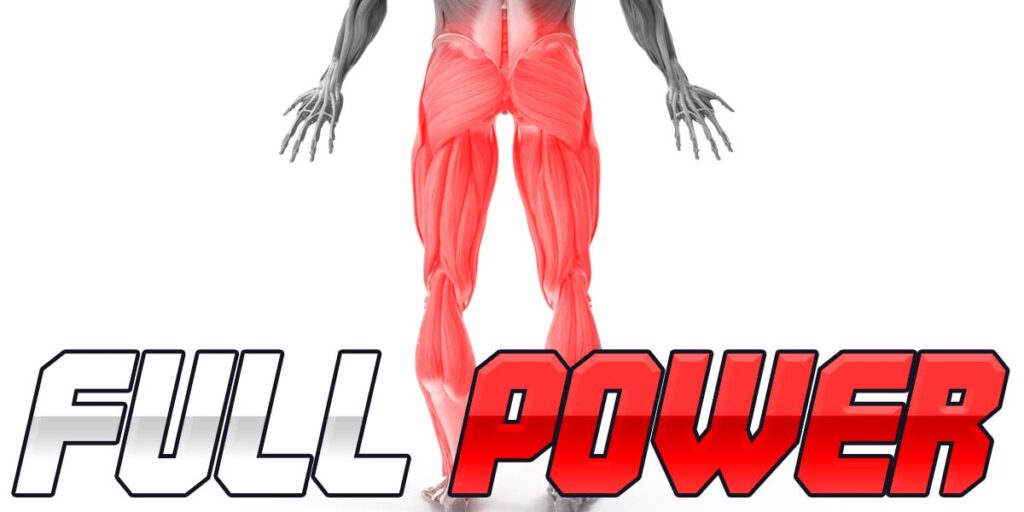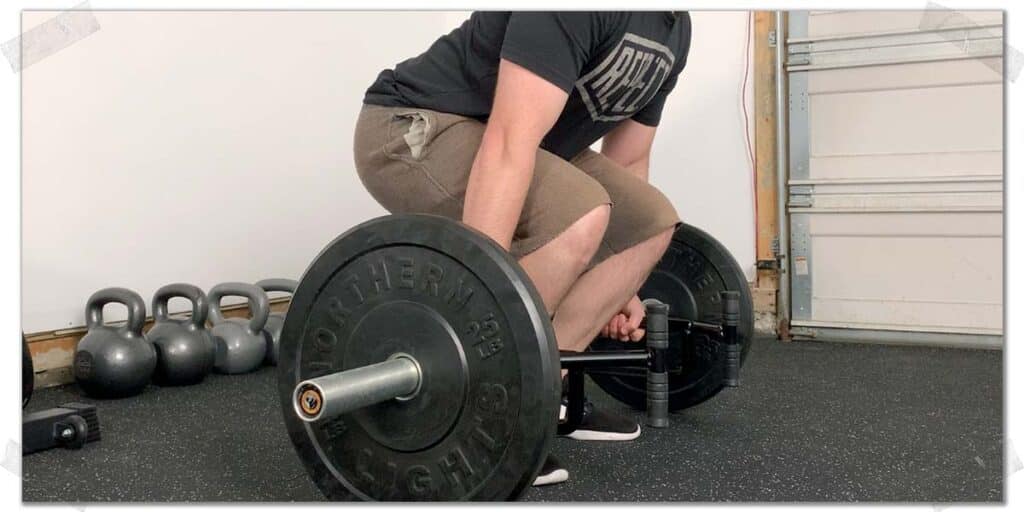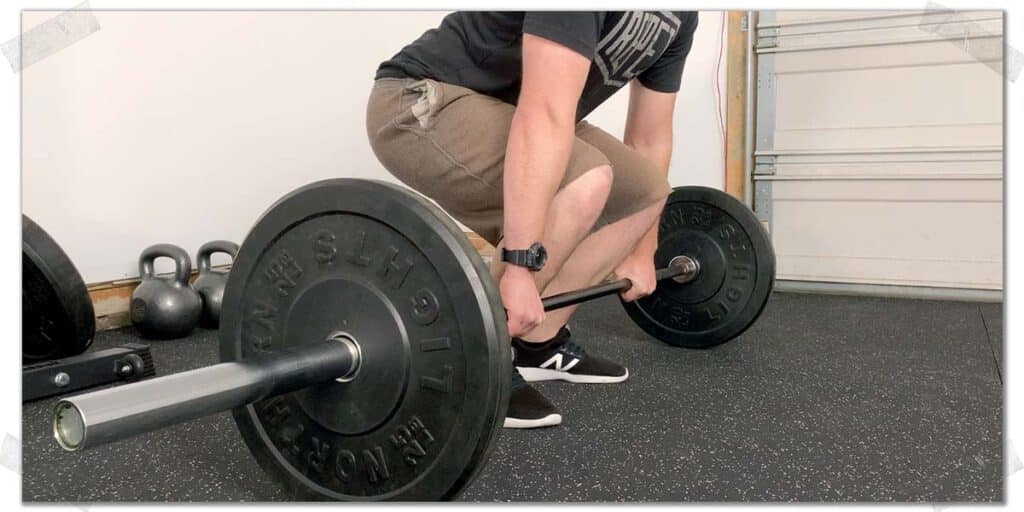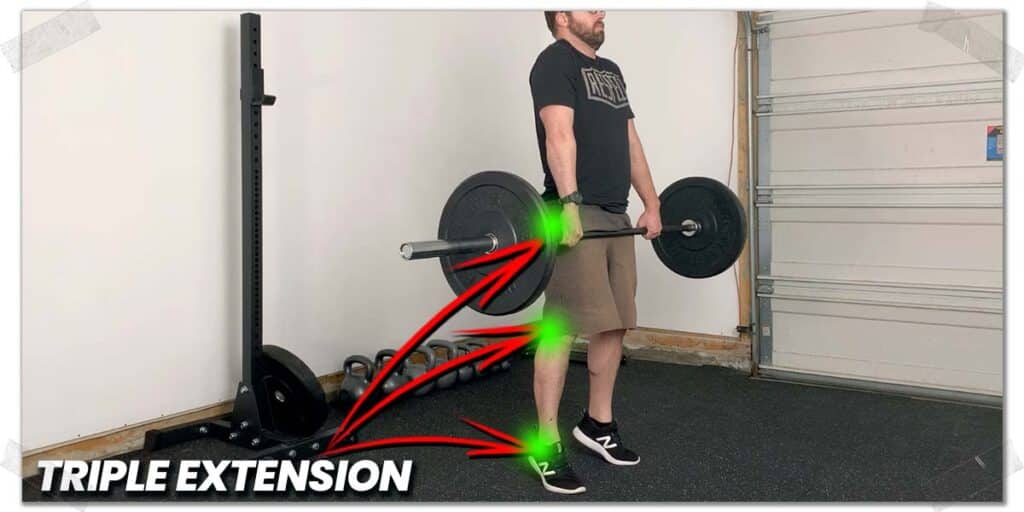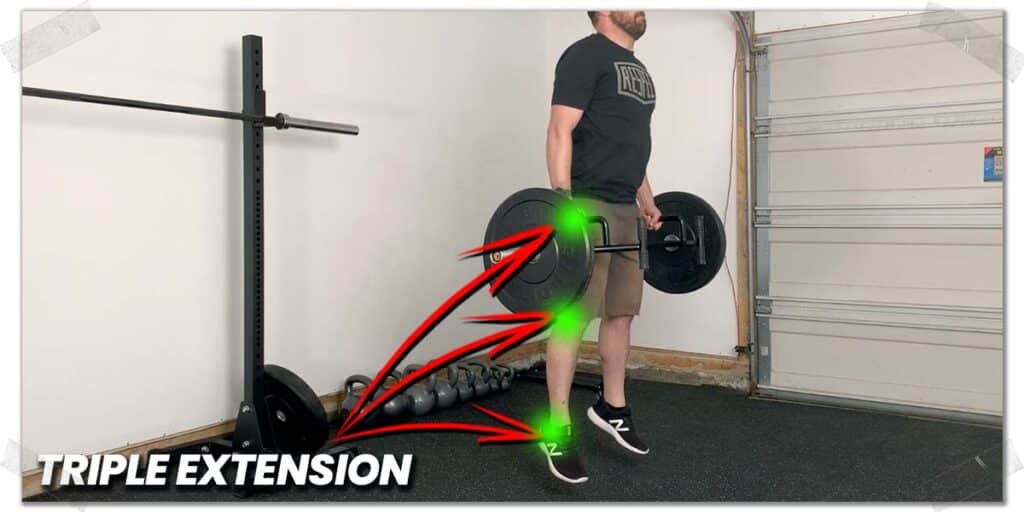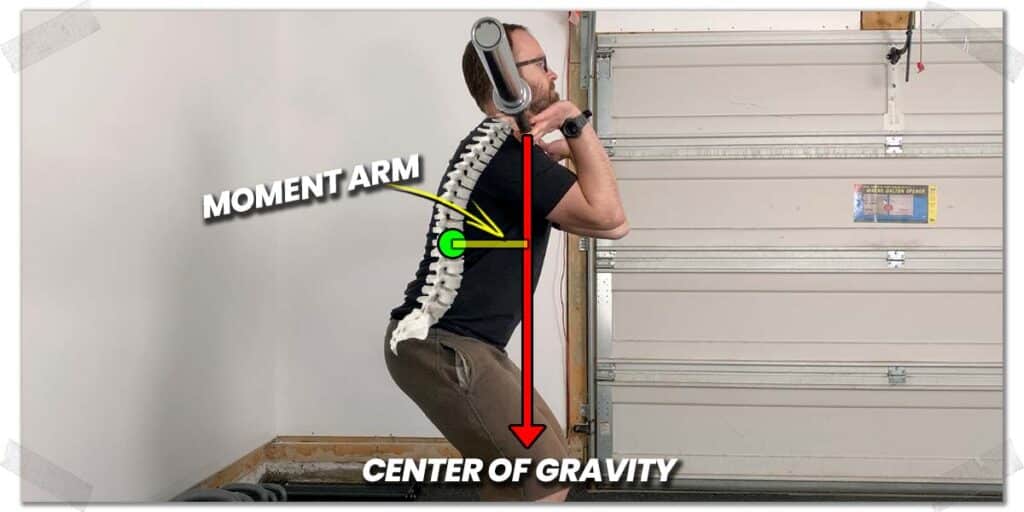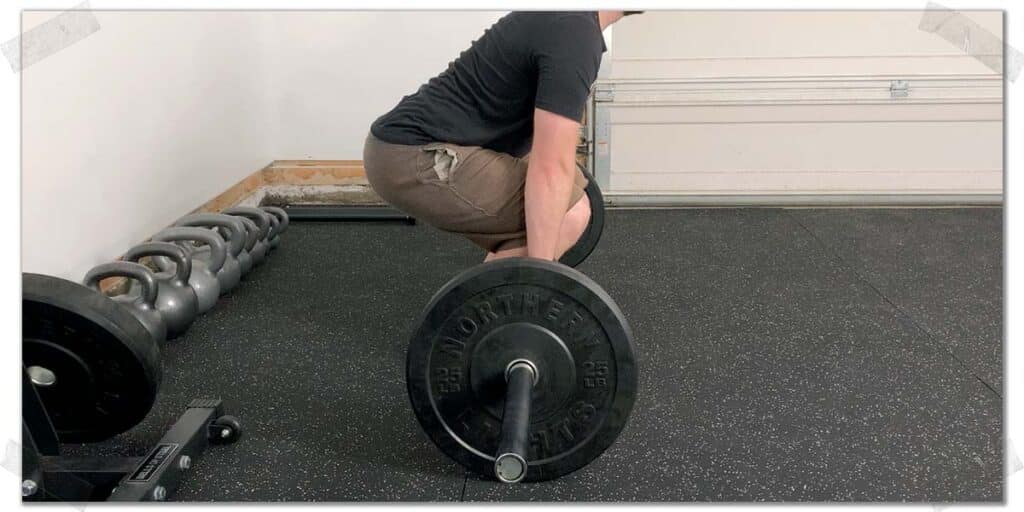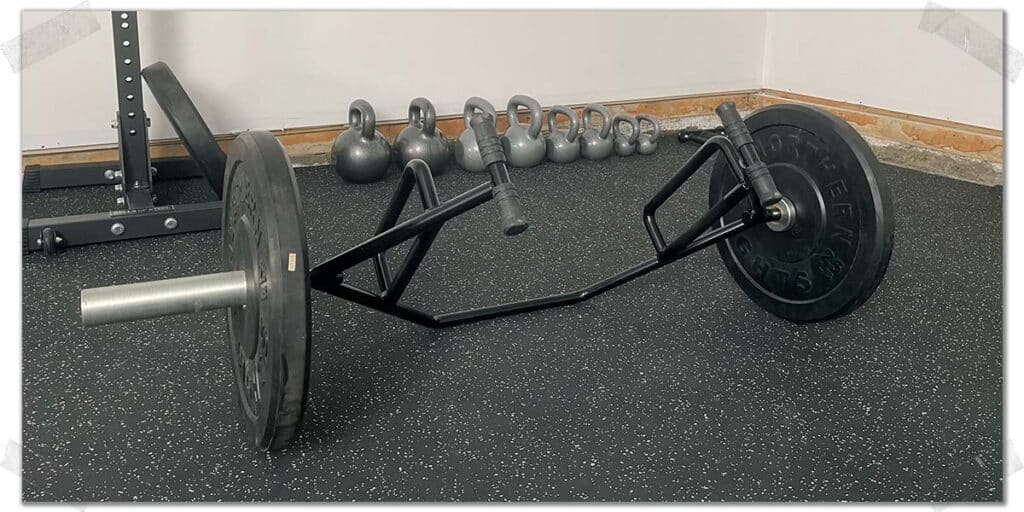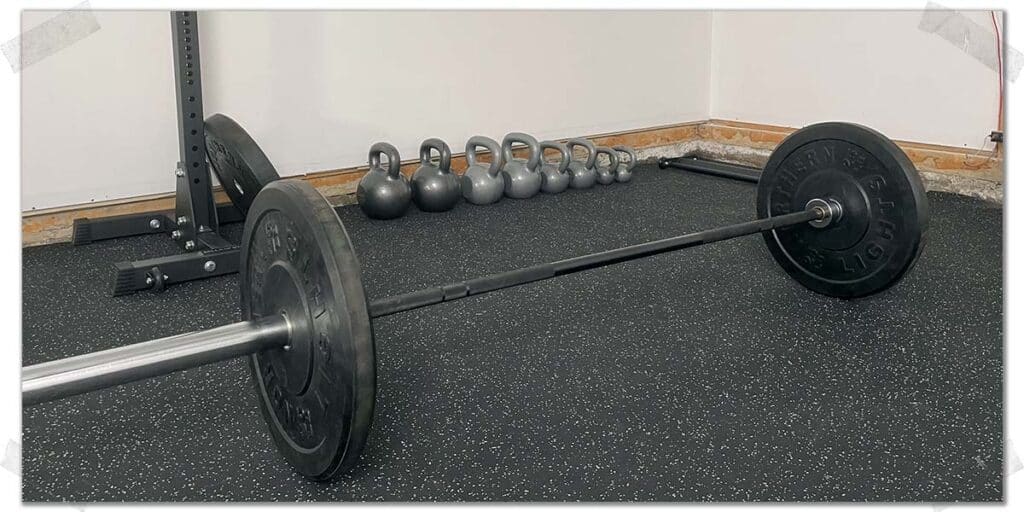When it comes to building explosive power and strength, two particularly common (and highly effective) exercises are often utilized: power cleans, and trap bar jumps. If they’re both incredibly effective, they must be quite similar, right? Yes…and…No. It’s complicated, but there’s a time and a place for each, and I’ll be breaking it down in this article.
Trap bar jumps and power cleans enhance lower body explosive strength by achieving a high rate of force development (RFD) by producing triple extension in the body. To determine which is best for you, you will need to consider practicality, lifting experience, and overall training goals.
Needless to say, there is a lot more that goes into it than that. Yes, we can talk about the scientific and geeky aspects of these exercises, but we also need to talk about practicality, training experience and the other often neglected factors that must be considered.
“Selecting the most ideal exercise of the two to perform is not only a matter of its respective scientific and performance-based aspects but also one of practicality; any exercise that is perfect ‘on paper’ but not practical given the circumstances is of little benefit.“
So keep reading if you want to go over the factors that aren’t being discussed on other websites breaking down this same topic.
Related content:
Quick terminology notes
- The trap bar is also commonly referred to as the hex bar. For consistency’s sake, I will only refer to it as the trap bar, but just know that these terms are completely interchangeable.
- The power clean is technically not the same as the clean. The movements are the exact same; however, the power clean requires the barbell to be pulled much higher upwards (typically to collarbone level). The clean requires the barbell to be pulled less high since the weightlifter will drop underneath when catching the barbell, thereafter returning to a standing position. For any discussion of power cleans within this article, the exact same concepts will apply to the clean as well.
Similarities of each exercise
While the trap bar jump and power clean aren’t the exact same exercise, they have extensive overlap in what they achieve and how these achievements are made. While it’s not a bad idea to look for the differences (I’ll get to those in a bit), it’s quite important to also look at the similarities; having an awareness of each will further contribute to knowing when either of the two exercises will be appropriate to perform.
Similarity 1: Explosive power through rate of force development
Each of the two exercises in question here involves movements that are explosive (very fast) in nature. An explosive movement requires the body to produce higher amounts of muscular force (force is equal to mass x acceleration).
The more work muscles have to produce over a shorter duration of time, the greater their overall power output will be (power is equal to the amount of work performed divided by the amount of time it takes to be performed).
To achieve this explosive power, the body must produce force at very vast rates, which is referred to as the rate of force development (RFD). Rate of force development is an essential component of training for athletes competing in sports requiring sudden, explosive movements.
Similarity 2: Producing triple extension
Triple extension refers to the lower body achieving a fully extended position of the ankles, knees, and hips. It is the position that produces maximal propulsion of the body (either vertically or horizontally). Training for triple extension is essential to improve lower body explosive power in functional manners that will transfer to an athlete’s sport.
For athletes and individuals looking to develop explosive power (leading to quicker and more forceful propulsion of the body), implementing exercises involving producing triple extension against resistance is of paramount importance.
The loaded trap bar jump and the power clean will produce triple extension, so regardless of which exercise you pick, you’ll be training this functional movement with either.
Notable differences between each exercise
For all the ways in which the trap bar jump and power cleans are similar, they have some subtle but notable differences worth mentioning.
Different and changing center of gravity with cleans
While the distribution of weight (either from the trap bar or traditional barbell) in relation to the lifter may appear the same, two notable differences exist when comparing each exercise:
- The weight’s center of gravity in relation to the lifter
- The change in the height of the center of gravity
Center of gravity in relation to the lifter
With power cleans, the center of gravity will be slightly further in front of the lifter throughout the movement (most notably after the weight is caught) than with the trap bar jump. This difference may seem minimal, but it can certainly add up, particularly as weight increases on the barbell.
This will factor in most notably once the weight is caught and racked by the lifter. With the weight resting near the collarbone (which is more on the front side of the body), the muscles of the mid and upper back, along with the deep abdominal region, will have to engage in a much different manner than when standing in a trap bar with the weight around waist-height.
When the center of gravity is shifted anteriorly (forwards), the upper, mid and lower back muscles will work a bit more intensely to keep the torso upright than when compared to the weight positioning during the trap bar jump.
Changes in center of gravity height
Additionally, the height of the center of gravity changes in relation to the lifter with power cleans (it’s lower during the first pull but is higher in the second pull and highest at the catch and recovery stage). It does not change with the trap bar jump.
With more of a top-heavy load being produced with power cleans compared to trap bar deadlifts, this change in spinal and torso muscle activation is one of the main differences to be aware of. Again, the changing height is neither inherently good nor bad. Rather, it creates a difference in muscular recruitment around the low, mid, and upper back. As such, this factor should be taken into account based on the needs of the individual lifter.
Technical finesse of performing cleans
While both exercises are outstanding for producing explosive power, the trap bar jump requires much less technical execution than when compared to its counterpart – the power clean.
As long as an otherwise healthy athlete has good jump and landing mechanics, they can likely perform trap bar jumps in a safe manner (when given an appropriate load). Essentially, this is because the athlete simply has to jump and land while holding onto the trap bar handles.
The same can’t necessarily be said for power cleans and cleans (cleans require even greater technical execution than power cleans due to the requirement of dropping underneath the barbell for the catch). The clean will require athletes/individuals to not only perform the deadlift but also to go through an additional “second pull” stage, along with a catch and recovery stage.
Lifters inexperienced with power cleans very often do not produce triple extension (they tend to “leave their hips behind”). This is not a safety issue; however, it is a performance-hindering issue since triple extension is not achieved.
An inefficient power clean will not only marginalize the efficacy of the exercise (reducing the transfer of effectiveness to the athlete’s sport) but can also predispose the individual to increased injury potential.
Considerations for picking each exercise
Selecting the most ideal exercise of the two to perform is not only a matter of its respective scientific and performance-based aspects but also one of practicality; any exercise that is perfect “on paper” but not practical given the circumstances is of little benefit.
Yes, the scientific and performance-based merits are worth knowing (and then implementing). But these merits are of little value if they compromise the lifter’s safety or drastically impede other aspects of the training session.
As such, what follows are some scientific and practicality-based considerations for when to opt for each exercise.
Practicality considerations for trap bar jumps
- You (or the lifter you’re training) are not technically proficient or experienced with performing power cleans; sloppy cleans will yield minimal benefit and only increase the chances of injury.
- You or the lifter are training in a smaller or crowded area where it may not be safe to perform cleans (this happens a lot in smaller gyms).
- Opt for trap bar jumps over power cleans if you (or the lifter) struggle to produce triple extension (particularly through hip extension) when performing cleans.
- Opt for trap bar jumps if you (or the lifter) have mobility issues (such as in the shoulders or wrists) that may impede the ability to maintain ideal positioning and safe technique with power cleans.
- You don’t have access to a traditional barbell with adequate bearings. A lousy barbell can be irritating on the wrists when performing cleans.
Related content:
Sports science considerations for trap bar jumps
- Consider opting for trap bar jumps when you want to perform rapid, explosive movements (i.e., for metabolic purposes) that induce a greater amount of muscular fatigue.
- Consider opting for trap bar jumps when you want to incorporate lower-body RFD exercises that emphasize improving jump height.
Practicality considerations for power cleans
- You don’t have access to a trap bar. (A bit obvious but still worth mentioning.)
- You (or the lifter) want to improve full-body power while refining the clean or power clean.
- You or (the lifter) do not have safe jump landing mechanics.
- You want to learn how to ultimately progress into cleans and not just power cleans.
Sports science considerations for power cleans
- You want to maximize upper back strength (particularly through the trapezius muscle) in addition to lower body power.
- You want to improve or promote upper-body mobility, particularly with shoulder flexion and wrist extension.
- You (or the athlete) compete in a barbell-based sport; this will reinforce the concept of specificity for maximal transference to their sport (Olympic lifting, powerlifting, etc.).
Final thoughts
When it comes to selecting from either power cleans, or trap bar jumps, it’s not an issue of “which exercise is better”; it’s an issue of which one is more practically suited for the needs of the individual and their overall abilities. Both are outstanding exercises that have an extensive amount of training overlap while simultaneously retaining unique benefits.

Hi! I’m Jim Wittstrom, PT, DPT, CSCS, Pn1.
I am a physical therapist who is passionate about all things pertaining to strength & conditioning, human movement, injury prevention and rehabilitation. I created StrengthResurgence.com in order to help others become stronger and healthier. I also love helping aspiring students and therapists fulfill their dreams of becoming successful in school and within their clinical PT practice. Thanks for checking out my site!

